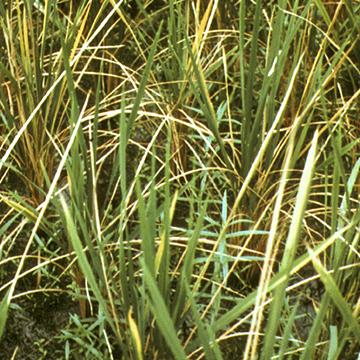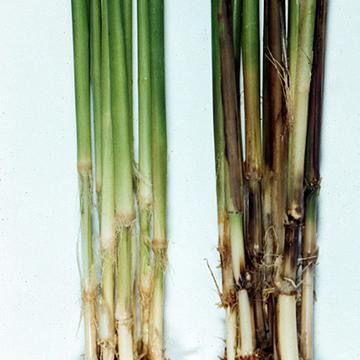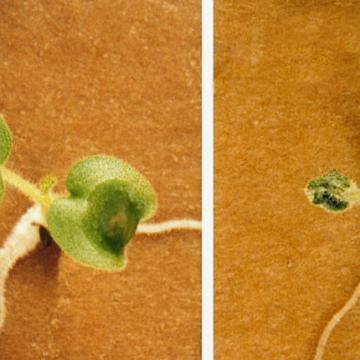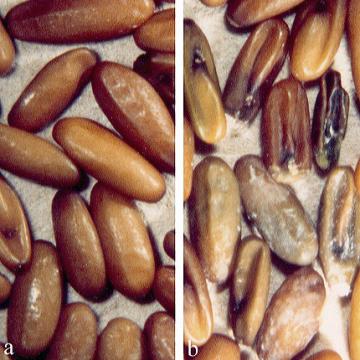DISEASE: Bacterial foot rot
HOST: Rice
The disease causes sheaths to turn dark brown and rot; dead leaves droop. Nodes, culms, and crowns also decay, and infected tillers are easily detached from the crown. Culms and internodes turn black.
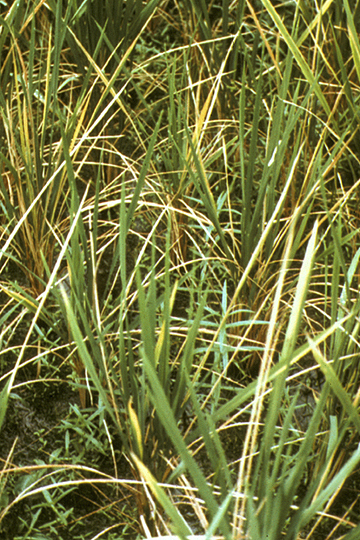
Bacterial foot rot | Rice
DISEASE: Bacterial foot rot
HOST: Rice (Oryza sativa)
PATHOGEN: Dickeya zeae
PATHOGEN SYNONYM: Erwinia chrysanthemi pv. zeae
SOURCE: M. Goto
DISEASE: Bacterial foot rot
HOST: Rice
Decayed culms (right) and healthy culms (left). Leaf sheaths of infected plants exhibit dark brown decay and attached leaves turn yellow and wilt.
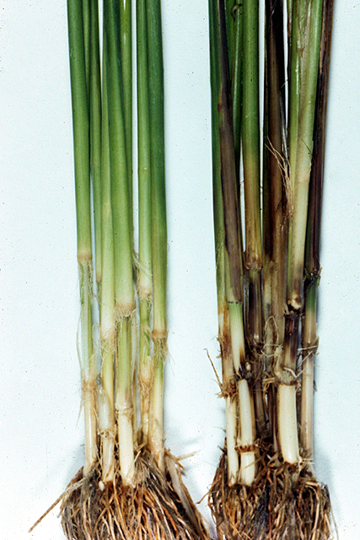
Bacterial foot rot | Rice
DISEASE: Bacterial foot rot
HOST: Rice (Oryza sativa)
PATHOGEN: Dickeya zeae
PATHOGEN SYNONYM: Erwinia chrysanthemi pv. zeae
SOURCE: M. Goto
DISEASE: Bacterial seed and seedling rot
HOST: Geranium
Cotyledons with water-soaked spots.
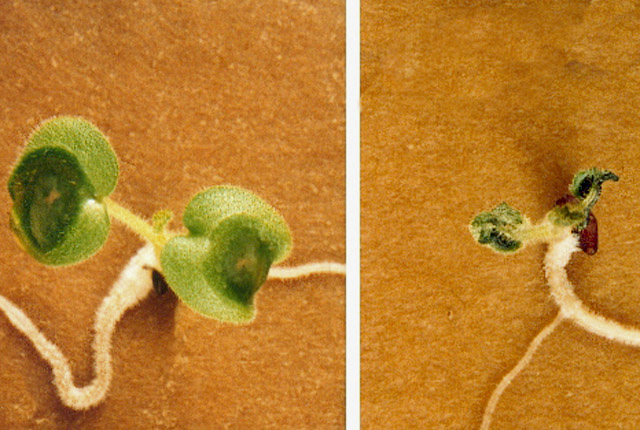
Bacterial seed and seedling rot | Geranium
DISEASE: Bacterial seed and seedling rot
HOST: Geranium (Pelargonium sp.)
PATHOGEN: Paenibacillus sp.
SOURCE: A. Magyarosy, D. Thomas
DISEASE: Bacterial seed and seedling rot
HOST: Geranium
Rotted and discolored seeds (right). Healthy seeds (left).
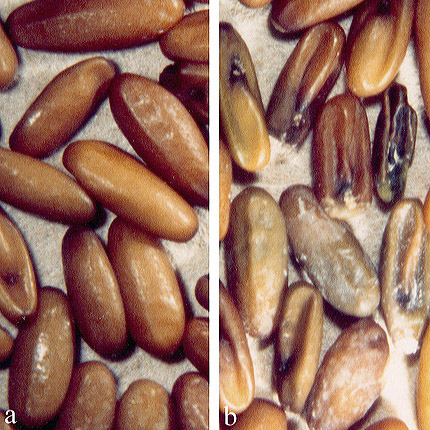
Bacterial seed and seedling rot | Geranium
DISEASE: Bacterial seed and seedling rot
HOST: Geranium (Pelargonium sp.)
PATHOGEN: Paenibacillus sp.
SOURCE: A. Magyarosy, D. Thomas
DISEASE: Slippery skin
HOST: Onion
Rot progresses from the top of infected scales and eventually internal tissues rot. In early stages, the only external symptoms may be softening of the neck.

Slippery skin | Onion
DISEASE: Slippery skin
HOST: Onion (Allium cepa)
PATHOGEN: Burkholderia gladioli pv. alliicola
PATHOGEN SYNONYM: Pseudomonas gladioli pv. alliicola
SOURCE: H. Schwartz


